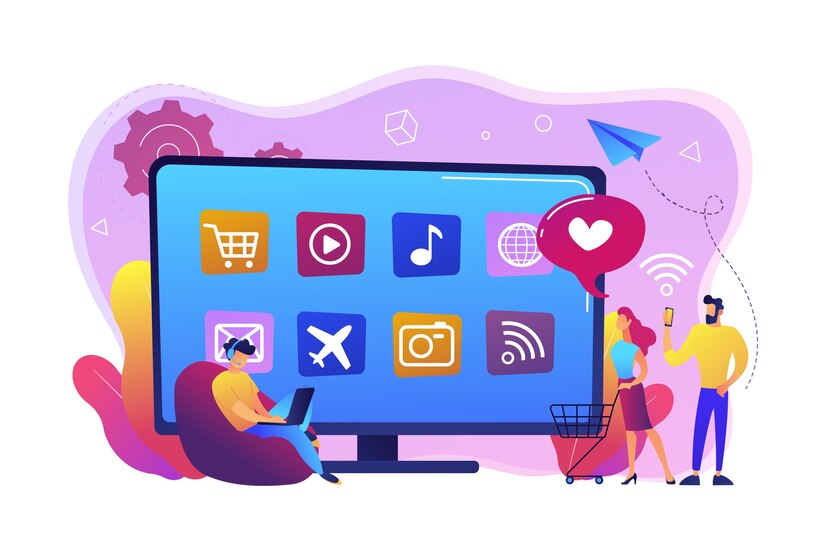In today’s digital age, consumers expect brands to be available and consistent across multiple touchpoints. With the rise of smartphones, social media, and e-commerce, customers interact with brands in more ways than ever before. Omnichannel marketing meets this demand by ensuring that every interaction is cohesive and tailored to the individual. This enhances customer satisfaction, fosters brand loyalty, and ultimately drives sales.
Omnichannel marketing is a strategic approach that integrates various marketing channels to create a seamless customer experience. Unlike multichannel marketing, which simply uses multiple platforms, omnichannel marketing ensures that all these platforms work together harmoniously. This means a customer can switch from browsing a product on a mobile app to purchasing it on a desktop website, and the experience remains consistent and personalized.
Table of Contents
Exploring Different Channels in Omnichannel Marketing
Understanding the different channels in marketing is the first step to having a comprehensive omnichannel marketing strategy.

Website: The Central Hub
Your website is the cornerstone of your online presence. It must be user-friendly, mobile-responsive, and personalized to enhance user experience. Here’s a closer look at what this entails:
User-Friendly Design
Ensure easy navigation with a clear layout, intuitive menus, and fast load times. A well-organized site structure helps users find what they need quickly. It fits in well with an overarching omnichannel marketing strategy.
Mobile Responsiveness
With the growing use of smartphones, your website must function smoothly on all devices. Implement responsive design techniques to ensure content adjusts to different screen sizes.
Personalization
Use data analytics to understand user behavior and tailor content accordingly. Personalized product recommendations, dynamic content, and customized offers can significantly improve engagement and conversions.
Tool for Website Optimization
Google Optimize allows you to run A/B tests and personalize website experiences based on user behavior. It integrates with Google Analytics, providing insights that help you refine your website’s performance and user experience.
Email Marketing: Direct Communication
Email marketing remains a powerful tool for maintaining direct contact with customers. Effective email marketing involves sending personalized offers, updates, and newsletters that resonate with individual preferences. It can be a valuable tool in your omnichannel marketing toolkit.
Segmentation
Divide your email list into segments based on demographics, purchase history, and engagement levels. This ensures that each group receives relevant content.
Personalization
Use personalized subject lines, tailored content, and product recommendations. Addressing recipients by name and referencing past interactions can increase open and click-through rates.
Automation
Implement automated workflows for welcome emails, abandoned cart reminders, and post-purchase follow-ups. Automation saves time and ensures timely, relevant communication.
Tool for Email Marketing
Mailchimp offers robust features for email segmentation, personalization, and automation. Its analytics help track performance and optimize campaigns for better engagement and conversion.
Social Media: Engagement and Promotion
Social media platforms like Facebook, Instagram, and Twitter are essential for brand engagement and promotion. Each platform serves a different purpose and audience, so tailoring your strategy to each is crucial. So, these platforms are crucial for your omnichannel marketing strategy.
Content Strategy
Develop a content calendar that includes a mix of promotional posts, user-generated content, educational material, and interactive content like polls and quizzes. Integrate this with your other omnichannel marketing methods for the best results.
Targeted Advertising
Use the advanced targeting options on social media platforms to reach specific audiences based on demographics, interests, and behaviors. Retargeting ads can help re-engage users who have visited your website or interacted with your content.
Engagement
Actively engage with your audience by responding to comments, messages, and mentions. Use social listening tools to monitor conversations about your brand and industry.
Tool for Social Media Management
Hootsuite allows you to manage multiple social media accounts, schedule posts, and analyze performance from a single dashboard. It also provides social listening features to track brand mentions and industry trends.
Mobile App: Enhancing Customer Experience
If you have a mobile app, it should offer a seamless experience that complements your website. Mobile apps provide unique opportunities for personalization and engagement. Their flexibility works great when it comes to omnichannel marketing.
User-Friendly Interface
Design your app to be intuitive and easy to navigate. Ensure quick load times and a smooth user experience.
Personalized Notifications
Use push notifications to send personalized updates, offers, and reminders based on user behavior and preferences.
Exclusive Features
Offer app-only deals, loyalty programs, and features that enhance the shopping experience, such as barcode scanning for in-store purchases.
Tool for Mobile App Optimization
Firebase provides tools for app development, analytics, and user engagement. Its push notification feature helps you send targeted messages to users, while its analytics offer insights into user behavior and app performance.

In-Store Experience: Bridging Online and Offline
For businesses with physical locations, ensuring a consistent and personalized in-store experience is crucial. This involves integrating online and offline data to enhance customer interactions. This bridges the gap between the two mediums and results in a cohesive omnichannel marketing strategy.
Unified Customer Profiles
Use CRM systems to create unified customer profiles that include online and offline interactions. This allows store associates to offer personalized service based on a customer’s purchase history and preferences.
Digital Integration
Equip stores with digital tools like tablets or kiosks that allow customers to browse products, check availability, and place orders. In-store Wi-Fi and mobile apps can enhance the shopping experience.
Personalized Interactions
Train staff to use customer data to personalize recommendations and offers. Encourage them to gather feedback and build relationships with regular customers.
Tool for In-Store Integration
Salesforce CRM integrates online and offline customer data, providing a 360-degree view of each customer. It helps store associates deliver personalized service and track customer interactions across all touchpoints.
Customer Support: Seamless Assistance Across Channels
Omnichannel customer support ensures that customers can reach you through their preferred methods, including live chat, email, phone, and social media. Consistent and responsive support is key to customer satisfaction. This seamless approach helps push your omnichannel marketing strategy forward.
Integrated Support System
Use a unified support platform to manage inquiries from all channels. This ensures that all customer interactions are logged and tracked, regardless of the channel used.
24/7 Availability
Offer multiple support options, including self-service resources like FAQs, chatbots, and help centers, to provide assistance at any time.
Personalized Support
Use customer data to personalize support interactions. Recognize returning customers and reference their previous inquiries to offer faster and more relevant solutions.
Tool for Customer Support
Zendesk is a comprehensive support platform that integrates various communication channels, including live chat, email, phone, and social media. It helps track customer interactions and provides tools for personalized support.
By effectively leveraging these channels and focusing on data analytics, personalization, and consistent branding, you can create a cohesive and engaging omnichannel customer journey. This approach not only enhances customer satisfaction but also drives brand loyalty and increases sales.
Tip 1: Personalize Your Customer Experience
Personalization is crucial in omnichannel marketing. Tailoring content, offers, and communications to individual customers based on their preferences and behaviors significantly enhances engagement and conversion rates.
Implementation
To implement personalization, start by collecting and analyzing customer data across all touchpoints. This includes website interactions, social media engagement, email responses, and in-store purchases. Use this data to segment your audience into different groups based on shared characteristics or behaviors.
For instance, if a segment of customers frequently purchases running shoes, you can create personalized email campaigns that highlight new running shoe arrivals, exclusive discounts, and related accessories. Ensure that this personalized experience extends across all channels. If a customer who received the email visits your website, they should see tailored recommendations and offers that reflect their interests.
Tool to Implement Personalization
One effective tool for implementing personalization in omnichannel marketing is HubSpot. HubSpot offers robust customer relationship management (CRM) capabilities that allow you to track and analyze customer interactions across various channels. It enables you to create detailed customer profiles and segment your audience effectively. With its marketing automation features, you can send personalized emails, create targeted ad campaigns, and ensure a consistent experience across your website and social media platforms.
Tip 2: Utilize Data Analytics for Decision-Making
Data analytics is vital for understanding customer behavior and optimizing your omnichannel marketing strategy. Analyzing data from various touchpoints provides insights into what works and what doesn’t, helping you make informed decisions.
Implementation
Begin by setting up analytics tools like Google Analytics for your website and social media analytics for platforms like Facebook and Instagram. Collect data on customer interactions, such as page views, click-through rates, and social media engagement.
Analyze this data to identify trends and patterns. For example, if you notice that a particular product page has a high bounce rate, it may indicate that the page content or design needs improvement. Conversely, high engagement on certain social media posts can inform future content strategies.
Regularly review your data to adjust your campaigns. Use A/B testing to compare different approaches and determine which ones yield better results. This data-driven approach ensures your omnichannel marketing efforts are continuously optimized.
Tool to Implement Data Analytics
Google Analytics is a powerful tool for tracking and analyzing website data. It provides detailed reports on user behavior, traffic sources, and conversion rates. For social media, tools like Hootsuite or Sprout Social offer comprehensive analytics to monitor engagement and performance across multiple platforms.
Tip 3: Maintain Consistent Branding
Consistency in branding across all channels ensures a cohesive and recognizable customer experience. This strengthens brand identity and builds trust with your audience. It also helps you maintain a similar theme across your omnichannel marketing platforms.
Implementation
Develop brand guidelines that outline your brand’s voice, tone, colors, fonts, and imagery. Ensure that these guidelines are adhered to across all channels, from your website and social media to email campaigns and in-store signage.
For instance, if your brand uses a friendly and informal tone, this should be reflected in your social media posts, email communications, and customer support interactions. Consistent visual elements, like logos and color schemes, should be present in all marketing materials to create a unified look and feel.
Tool to Maintain Consistent Branding
Canva is an excellent tool for maintaining brand consistency. It allows you to create branded templates for social media posts, emails, and other marketing materials. You can store your brand’s colors, fonts, and logos in one place, ensuring that every piece of content aligns with your brand guidelines.
Tip 4: Leverage Social Proof
Social proof, such as customer reviews and testimonials, can significantly influence purchasing decisions. Integrate social proof across all channels to build credibility and trust within your omnichannel marketing platforms.
Implementation
Encourage satisfied customers to leave reviews on your website, Google, and social media pages. Highlight positive testimonials in your marketing materials, such as on your website’s homepage, in email newsletters, and in social media posts.
For example, create a dedicated section on your website for customer reviews. Share user-generated content on your social media channels, showcasing real customers using and enjoying your products. Feature testimonials in email campaigns to reinforce trust and encourage conversions.
Tool to Leverage Social Proof
Yotpo is a valuable tool for collecting and showcasing customer reviews and ratings. It integrates with your website and social media platforms, allowing you to display reviews and user-generated content seamlessly. Yotpo also offers features for gathering and managing customer feedback, enhancing your credibility and trustworthiness. It helps you track the success of your omnichannel marketing ideas.
Tip 5: Optimize for Mobile
With the increasing use of smartphones, optimizing your omnichannel strategy for mobile is crucial. Ensure that your website, emails, and ads are mobile-friendly to provide a seamless experience for mobile users.
Implementation
Start by making your website responsive, so it adapts to different screen sizes. Test your website’s mobile performance to ensure quick load times and easy navigation. For email campaigns, use mobile-friendly templates with clear, concise content and prominent call-to-action buttons.
Run mobile-specific ad campaigns on platforms like Facebook and Google, targeting users based on their mobile behavior. Ensure your mobile app, if you have one, is user-friendly and offers exclusive features or deals to enhance customer engagement.
Tool to Optimize for Mobile
Mobile optimization tools like Google’s Mobile-Friendly Test can help you assess and improve your website’s mobile performance. For email marketing, tools like Mailchimp offer mobile-responsive templates to ensure your emails look great on any device.
By leveraging data analytics, maintaining consistent branding, utilizing social proof, and optimizing for mobile, you can enhance your omnichannel marketing strategy and provide a superior customer experience.
Omnichannel marketing is essential in today’s interconnected world, where customers expect seamless, personalized experiences across all touchpoints. By integrating various channels—websites, email, social media, mobile apps, in-store interactions, and customer support—businesses can deliver consistent and engaging interactions. Utilizing data analytics for decision-making, maintaining consistent branding, leveraging social proof, and optimizing for mobile ensures a cohesive customer journey. Tools like Google Analytics, Mailchimp, Hootsuite, and Zendesk help implement these strategies effectively. Embracing omnichannel marketing not only enhances customer satisfaction but also fosters brand loyalty and drives growth in a competitive market.
Visit Evolve Dash to learn more about the best ways to market your business!



















